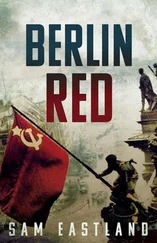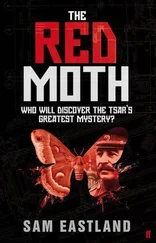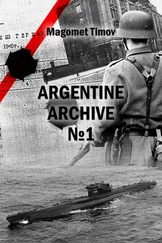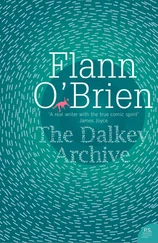Sam Eastland - Archive 17
Здесь есть возможность читать онлайн «Sam Eastland - Archive 17» весь текст электронной книги совершенно бесплатно (целиком полную версию без сокращений). В некоторых случаях можно слушать аудио, скачать через торрент в формате fb2 и присутствует краткое содержание. Жанр: Исторический детектив, на английском языке. Описание произведения, (предисловие) а так же отзывы посетителей доступны на портале библиотеки ЛибКат.
- Название:Archive 17
- Автор:
- Жанр:
- Год:неизвестен
- ISBN:нет данных
- Рейтинг книги:3 / 5. Голосов: 1
-
Избранное:Добавить в избранное
- Отзывы:
-
Ваша оценка:
- 60
- 1
- 2
- 3
- 4
- 5
Archive 17: краткое содержание, описание и аннотация
Предлагаем к чтению аннотацию, описание, краткое содержание или предисловие (зависит от того, что написал сам автор книги «Archive 17»). Если вы не нашли необходимую информацию о книге — напишите в комментариях, мы постараемся отыскать её.
Archive 17 — читать онлайн бесплатно полную книгу (весь текст) целиком
Ниже представлен текст книги, разбитый по страницам. Система сохранения места последней прочитанной страницы, позволяет с удобством читать онлайн бесплатно книгу «Archive 17», без необходимости каждый раз заново искать на чём Вы остановились. Поставьте закладку, и сможете в любой момент перейти на страницу, на которой закончили чтение.
Интервал:
Закладка:
WHAT REALLY HAPPENED IN SIBERIA
The struggle for domination in Siberia during and after the Russian Revolution is one of the bloodiest and most confusing chapters of military history. At the height of the struggle, more than twenty-four separate governments had been established between the Ural Mountains, which mark the western border of Siberia, and Vladivostok on the Pacific coast. This was not merely a fight between Bolsheviks (Reds) and anti-Bolshevik (White) Russian forces. It also involved troops sent from the United States, Britain, France, and Japan, all of whom saw heavy fighting, in some cases against the very people they had been sent to protect.
Central to this conflict was the role played by the Czechoslovakian Legion, whose extraordinary journey across the entire length of Russia is not only inspiring but almost incredible.
What were Czechs and Slovaks doing in Siberia, thousands of miles from their native country? The answer is that prior to 1919 they didn’t have a country. Instead, Czechs and Slovaks represented only two of dozens of different ethnicities which made up the Habsburg Empire, also sometimes called the Austro-Hungarian Empire, since these were the largest and most dominant nationalities.
The Habsburg Empire had been founded back in 1526, and had, for generations, served as a barricade of Christianity against the Muslim countries to the south and east. At the height of its powers in the sixteenth century, the Habsburg Empire controlled a large portion of Europe.
By 1914, at the outbreak of the First World War, the empire was in serious decline. It was the assassination of the Archduke Ferdinand, a member of Habsburg royalty, that would propel the Austro-Hungarian Empire into a conflict which it would not survive. By the time the guns of the Great War ceased firing, at the eleventh hour of the eleventh day of the eleventh month of 1918, the ties which bound together the many countries of the Habsburgs had been permanently severed, and their empire ceased to exist.
One of the new countries to emerge from this collapse was Czechoslovakia, which existed from 1919 until 1993, when it divided into two separate nations, Slovakia and the Czech Republic.
In 1914, although many Czechs and Slovaks wanted independence from Austria-Hungary, the chances of achieving this must have seemed remote. The First World War gave them the chance they had been waiting for. As subjects of Austria-Hungary, they were expected to fight under the banner of the Habsburgs, joining with Germany and Turkey in an alliance which became known as the Central Powers.
Knowing that their only hope of independence was the defeat of the very country for which they were expected to fight, many Czechs and Slovaks chose instead to take up arms against Austria-Hungary. The result of this was the Czechoslovakian Legion, whose soldiers fought alongside not only the Russians but also the French and the Italians.
It is, however, for the exploits of those Czechs and Slovaks fighting among the Russians that the Czechoslovakian Legion is best known.
Although the Russian Tsar Nicholas II did not encourage their independence, many Czech and Slovak soldiers chose to desert from the Austro-Hungarian army in order to fight for the Russians. Another source of manpower came from those Czech and Slovak troops who had been taken prisoner by the Russians and opted to serve in the Russian army. A third group was made up of men who, although they lived within the boundaries of Russia, felt themselves to be ethnically Czech or Slovak.
After the March Revolution of 1917, when the Tsar officially stepped down from power, the interim government of Alexander Kerensky proved to be more sympathetic to the cause of Czechoslovakian independence.
Up until this time, Czechs and Slovaks serving in the Russian army had not been formed into a single fighting force. With Kerensky’s approval, and thanks to the efforts of two men who would go on to become leaders of the Czechoslovakian movement for independence, Thomas Masaryk and Eduard Benes, the Czechoslovakian Legion was founded in the spring of 1917.
In October of that year, following the Soviet government’s “Decree of Peace,” the legion found itself in a serious predicament. Having taken up arms against the Habsburg Empire, they could not return to their homeland, since the Central Powers had not yet been defeated. To make matters worse, the well-trained, heavily armed Czech Legion was now perceived as a threat by both the Bolsheviks and the Central Powers.
Unwilling to abandon the cause of Czechoslovakian independence, Masaryk suggested that the Czech Legion now be placed under the nominal command of the French army, which was still heavily engaged against Germany, the dominant partner in the Central Powers alliance.
This transfer of command was accomplished in December 1917, but that was by no means the end of difficulties for the legion. The greatest problem was one of geography. How were more than thirty thousand men of the Czechoslovakian Legion supposed to get from Russia to France? The two countries were separated by their archrival, Germany.
It was then that the Czech Legion made the monumental decision to travel not west towards France but east, across the entire length of Russia, to the port of Vladivostok on the Pacific Ocean. From there, they would board ships that would take them to France, halfway round the world, so that they could continue the fight against the Central Powers.
Meanwhile, faced with the threat of renewed attacks, the Bolsheviks signed a peace accord with the Germans, known as the Treaty of Brest-Litovsk, in March of 1918. This treaty was both costly and humiliating to the Russians, and gave rise to the independence of the Baltic States (Estonia, Latvia, and Lithuania), as well as Finland and Ukraine. Czechs and Slovaks watched these developments with renewed hopes that their own independence might also be close at hand.
At this point, the Bolsheviks were as anxious to be rid of the Czech Legion as the legion was anxious to leave Russia. With permission from Stalin to travel unhindered to Vladivostok, the legion set out on its historic trek. For this, they followed the path of the Trans-Siberian Railroad, not only because it represented the most direct route across the country but also because the legion obtained access to trains.
In spite of Stalin’s permission, as the journey progressed, the legion encountered many difficulties from local governments demanding bribes in order to allow the legion to proceed through their territory. Partly as a result of this, by the time the first Czechoslovakians reached Vladivostok in May of 1918, the legion was spread out over literally thousands of miles between Vladivostok and the city of Penza, far to the west.
This dangerous situation was made even worse by an event which occurred on May 14, 1918, in the city of Chelyabinsk. An eastbound train loaded with Czechoslovakian Legionnaires found itself opposite a train filled with Hungarian troops heading west. These Hungarians were former POWs on their way home, having been released as part of the Brest-Litovsk Treaty.
To the Hungarians, these Czechoslovakians were nothing more than traitors to the Habsburg Empire. Amid a torrent of verbal abuse hurled between the two trains one Hungarian threw an iron bar at the Czechs, killing a man in the process.
The Czechs, who were not only armed but constituted a much larger force than the Hungarians, responded by attacking the Hungarians’ train and lynching the man who had thrown the iron bar. They then stormed through Chelyabinsk and freed a number of Czechs who were being held prisoner there, having been arrested by the local soviet for taking part in the attack.
The response from Moscow was swift. The diplomatic council representing Czechoslovakians, the Czech National Council, was ordered by Leon Trotsky, then Commissar of Foreign Affairs, to lay down its guns and surrender.
Читать дальшеИнтервал:
Закладка:
Похожие книги на «Archive 17»
Представляем Вашему вниманию похожие книги на «Archive 17» списком для выбора. Мы отобрали схожую по названию и смыслу литературу в надежде предоставить читателям больше вариантов отыскать новые, интересные, ещё непрочитанные произведения.
Обсуждение, отзывы о книге «Archive 17» и просто собственные мнения читателей. Оставьте ваши комментарии, напишите, что Вы думаете о произведении, его смысле или главных героях. Укажите что конкретно понравилось, а что нет, и почему Вы так считаете.











